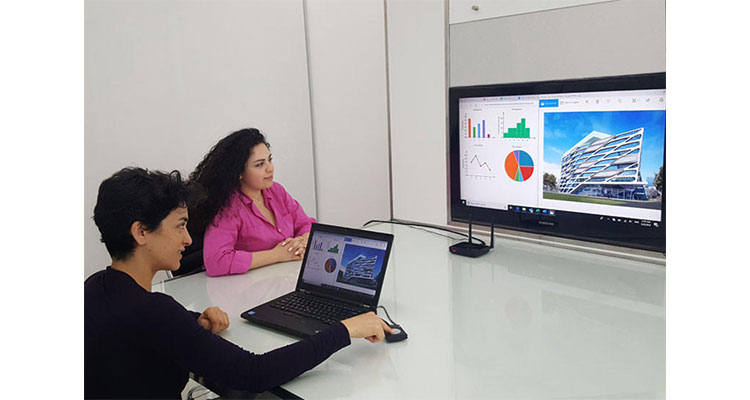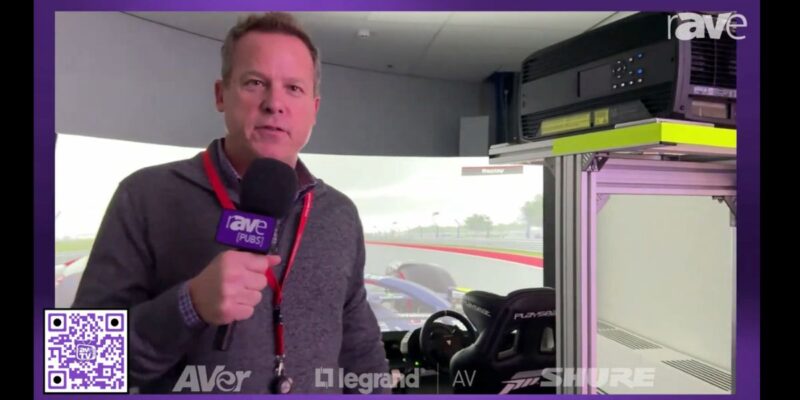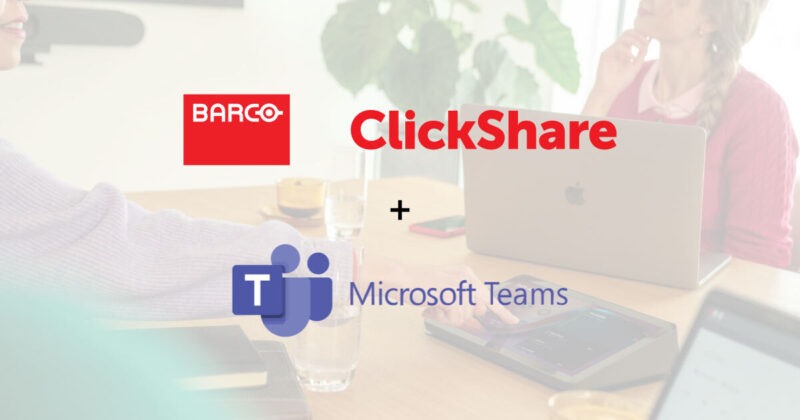Updated: New SilexPro ClickShow BYOD System Latest in Collaboration Tools Via Button
We initially wrote this article and pointed out the similarities between this product and Barco’s ClickShare. Silex sent us an email with clarification regarding the two systems’ differences. We’ve included their response in the last section below.
SilexPro just announced something they’re calling the SilexPro ClickShow, a wireless BYOD system using, yep, a button. Available in three different configurations, ClickShow solutions allow users in a meeting to connect their device to the presentation screen and share their content.
What makes this different from other things on the market? The SilexPro ClickShow has the users connect an HDMI dongle to the standard display port of their laptop, which links wirelessly with the base station. By using an HDMI dongle, users don’t have to download anything. The ClickShow can also use USB for power.
For tablet and smartphone users, ClickShow also supports native Apple AirPlay, allowing iOS users to connect devices directly to the base station. SilexPro ClickShow also supports Android devices via an app available from the Google Play store. The ClickShow solution is thus device-agnostic, OS-agnostic and can run on secured laptops with corporate security rules.
Here are all the specs.
Update: We received a comment from SilexPro about the differences between ClickShow and Barco’s ClickShare. Read it below:
Barco has 3 main components in their Clickshare solution:
- A wireless receiver connected to a display (screen, projector,…)
- A wireless transmitter button connected to a “processing device having a second display, a memory and an operating system“ (in practice, a PC or laptop) via a USB port. This button has a memory storing an “executable software” that is designed to run on the operating system of the presenter PC
- An “executable software” (originally stored in the memory of the transmitter button) that is loaded (via the USB port of the transmitter button) and executed on the operating system of the presenter PC, to screen scrape the data from the PC (when triggered by the actuator on the button) and route it all the way via the USB port and the wireless transmitter (embedded in the button) to the wireless receiver where it will be decoded and displayed on the screen in a specific format
The Barco Clickshare solution mainly relies on the executable software that runs on the OS of the presenter PC to scrape/capture the screen content and send it to the receiver. This means that without this critical piece of software that runs on the operating system of the presenter PC after loading it from the button memory, the Barco solution is useless. This also means that the presenter device should have an operating system able to run the executable software.
The Clickshare button connects to the USB port of the presenter PC. The main function of the Barco Clickshare button’s actuator is to send a digital trigger signal via the USB port to the executable software running on the OS of the presenter PC to trigger (start or stop) scrapping screen data and sending it out for transmission.
On the other hand, Silex has only 2 main components in their ClickShow solution:
- A native wireless HDMI receiver connected to a display (screen, projector,…)
- A native wireless HDMI transmitter button connected to the display port of any device
The Silex ClickShow solution, doesn’t rely and doesn’t need any “executable software” to run on the device to which it is connected. In fact the device doesn’t have to be a “processing device having a second display, a memory and an operating system“ like in Barco’s case. It can be a DVD/Blu-ray system, a camera, a document cam, a video feed (HDMI IP decoder), or any imaging device with a standard display port without any operating system or memory. The ClickShow only uses a pair of wireless HDMI transmitter and receiver to carry the video signal of the imaging device on the transmitter side to the display on the receiver side.
The Silex ClickShow button is a simple On/Off button with a light indicator that starts and stops the transmitter sending the native Wireless HDMI signal to the receiver.
To simplify the comparison between the Barco Clickshare and the Silex ClickShow furthermore:
- The Silex ClickShow is a pair of standard wireless HDMI transmitter and receiver with ON/OFF button, that doesn’t interfere with the presenter device.
- The Barco Clickshare is a complex proprietary client-server architecture between an executable software client that loads and runs on the operating system of the presenter PC (thus interfering with the presenter PC and using and sinking its CPU and memory resources) and a server software running on a wireless receiver, via a wireless transmitter coupled with a digital trigger button that communicates with the executable software client via a USB port.
We believe that our truly clientless, OS agnostic, device agnostic technology and approach for wireless content sharing and presentations is easier and more flexible than other solutions available today in the market.
Furthermore, before introducing and launching our new Clientless wireless presentation solution which is based on Wireless HDMI extenders technology, we consulted and took the advice of some well-known international lawyers, who carefully reviewed and studied the Barco Clickshare Patents 348 and 769 and D’241, as well as all the ex parte re-examination certificates on these patents, and informed us that it is safe to proceed because our technology and approach is completely different from Barco’s technology and approach despite some “usage” similarities, which is completely normal. Take for example tyre manufacturers like Michelin, Goodyear, Intercontinental, Yokohama, and others they all have patents for some of their technologies, despite the fact the all tyres look similar from the outside and do the same job!
The ClickShow and the Clickshare approach and technologies are completely different as explained above, despite the fact that these “tyres” look similar and do the same job!
Finally, as you know, we also have patents for our Center of Table collaboration solution, and we highly appreciate ethical business and respect others’ rights in protecting their creative technologies and inventions.





